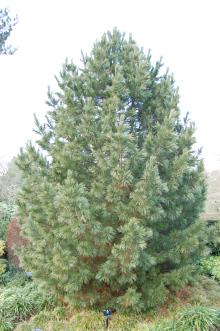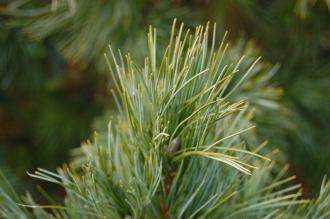
Pinus cembra (27/01/2013, Kew Gardens, London)
Position: Full sun
Flowering period:
Soil: Moist, well drained
Eventual Height: 20m
Eventual Spread: 10m
Hardiness: 3a -8b
Family: Pinaceae
Pinus cembra is a slow growing, long lived evergreen, upright conifer tree. Its blue/ green leaves are in the form of needles, appear in bundles of five and up to 9cm long. Its trunk may achieve a diameter of up to 1.5m. Its grey/ brown bark becomes scaly and fissured with age. Its pale yellow monoecious flowers are in the form of pollen cones. Its fruit are cones, these are initially blue green, maturing to pale brown and up to 8cm long. These contain ”Pine nuts’.
Pinus cembra, commonly known as the Swiss Stone Pine, Russian Cedar, Siberian Cedar Pine or Arolla Pine, is native to the Alps and the Carpathian Mountains. In its native habitat it grows at an altitude of 1,200m to 2,300m, often reaching the tree line. Pinus cembra is very resistant to White Pine Blister Rust.
The etymological root of the binomial name Pinus is the old classical name for ‘Pine tree’. Cembra is derived from an old Italian name for this Pine.
The landscape architect may find Pinus cembra useful as an evergreen parkland tree and is a particularly good selection for colder climates. This tree is not attractive to deer.
Ecologically, Pinus cembra ‘nuts’ are attractive to some birds and mammals.

Pinus cembra Leaf (27/01/2013, Kew Gardens, London)
Pinus cembra prefers moist, fertile, well-drained soils. It tolerates most pH of soil.
Pinus cembra requires little maintenance. Pruning should be carried out from late summer to mid winter.

